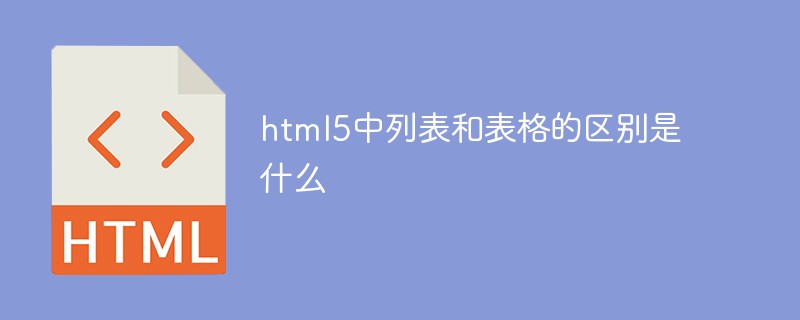 Web Front-end
Web Front-end H5 Tutorial
H5 Tutorial Introduction to an API for displaying battery status in HTML5_html5 tutorial skills
Introduction to an API for displaying battery status in HTML5_html5 tutorial skillsThe share of mobile devices in network traffic is growing significantly, and the network traffic they contribute is so huge that we have created some APIs and design concepts separately for mobile devices. A very typical example is the W3C Battery Status API, which allows an application to obtain the battery status information of the device. This article explores this new API and shows you how to integrate it into your existing applications.
Check whether the device supports
At present, the battery API still does not have mainstream support. Therefore, before using this API, you need to confirm whether the current device supports this API. The function shown below returns a Boone value (True/False) indicating whether the current browser supports the battery status API.
This function first detects whether the navigator.battery object exists. If not present, continue to detect Mozilla-specific
Whether navigator.mozBattery exists. I've seen some code that also detects the webkitBattery object, but I can't confirm that it exists in Chrome.
Reference documentation: https://developer.mozilla.org/en-US/docs/DOM/window.navigator.battery
- functionisBatteryStatusSupported() {
- return!!(navigator.battery || navigator.mozBattery);
- }
Check the battery
If the battery object exists, it will contain the following four read-only properties.
- Charging - (Boone value) Indicates whether the system's battery is currently charging.
If there is no battery in the system, or it cannot be determined whether the battery is charging, the return value is True
- chargingTime - (numeric value) The time it takes for the battery to be fully charged (unit: seconds)
When the battery is fully charged, or there is no battery in the system, this value is 0.
If the system is not charging, or the time required to fully charge cannot be determined, this value is ∞ (infinity).
- dischargingTime - similar to chargingTime, (numeric value) the remaining time (unit: seconds) until the battery is completely discharged and the system goes to sleep (unit: seconds)
If the discharge time cannot be determined, or the system has no battery or the system is charging, this value is ∞ (infinity)
- level —— (numeric value) The current power level of the device. The value is in the range of (0 ~ 1.0), corresponding to the remaining power percentage.
1.0 means the battery is fully charged, or there is no battery, or the value cannot be determined.
Detect battery events
All the above properties are bound to a battery event. These events are used to indicate changes in battery status. For example, plugging in a power source changes the charging property from false to true. All four battery events are listed below:
- chargingchange - This type of event will be triggered when the charging attribute changes. This event can be captured and handled by the onchargingchange() event handler.
Chargingtimechange - This type of event will be triggered when the chargingtime attribute changes. This event can be captured and handled by the onchargingtimechange() event handler.
dischargingtimechange - This type of event will be triggered when the dischargingTime property changes. This event can be captured and handled by the ondischargingtimechange() event handler.
Levelchange - This type of event will be triggered when the level attribute changes. This event can be captured and handled by the onlevelchange() event handler.
Sample page
The following code shows how to use the properties and events of the Battery Status API.
The sample page displays the various property values of the API and updates their values when the event is triggered.
Click here to access online examples.
- html>
- htmllanghtmllang="en">
- head>
- title>The Battery Status API - Exampletitle>
- metacharsetmetacharset="UTF-8"/>
- script>
- window.addEventListener("load", function() {
- var battery = navigator.battery || navigator.mozBattery;
- function displayBatteryStats() {
- document.getElementById("charging").textContent = (battery.charging) ? "charging" : "not charging";
- document.getElementById("chargingtime").textContent = battery.chargingTime;
- document.getElementById("dischargingtime").textContent = battery.dischargingTime;
- document.getElementById("level").textContent = battery.level * 100;
- }
- if (battery) {
- displayBatteryStats();
- battery.addEventListener("chargingchange", displayBatteryStats, false);
- battery.addEventListener("chargingtimechange", displayBatteryStats, false);
- battery.addEventListener("dischargingtimechange", displayBatteryStats, false);
- battery.addEventListener("levelchange", displayBatteryStats, false);
- } else {
- document.getElementById("stats").textContent = "Sorry, your browser does not support the Battery Status API";
- }
- }, false);
- script>
- head>
- body>
- dividdivid="stats">
- Your battery is currently spanidspanid="charging">span>.br/>
- Your battery will be charged in spanidspanid="chargingtime">span> seconds.br/>
- Your battery will be discharged in spanidspanid="dischargingtime">span> seconds.br/>
- Your battery level is spanidspanid="level">span>%.
- div>
- body>
- html>
结论
本文为Battery Status API给出了一个完整的总结和展示,尽管其仍未得到主流支持,但是这只是时间问题。考虑到移动互联网的激增,开发者应该尽快将电池信息纳入设计范畴内。
 html5的div一行可以放两个吗Apr 25, 2022 pm 05:32 PM
html5的div一行可以放两个吗Apr 25, 2022 pm 05:32 PMhtml5的div元素默认一行不可以放两个。div是一个块级元素,一个元素会独占一行,两个div默认无法在同一行显示;但可以通过给div元素添加“display:inline;”样式,将其转为行内元素,就可以实现多个div在同一行显示了。
 html5中列表和表格的区别是什么Apr 28, 2022 pm 01:58 PM
html5中列表和表格的区别是什么Apr 28, 2022 pm 01:58 PMhtml5中列表和表格的区别:1、表格主要是用于显示数据的,而列表主要是用于给数据进行布局;2、表格是使用table标签配合tr、td、th等标签进行定义的,列表是利用li标签配合ol、ul等标签进行定义的。
 html5怎么让头和尾固定不动Apr 25, 2022 pm 02:30 PM
html5怎么让头和尾固定不动Apr 25, 2022 pm 02:30 PM固定方法:1、使用header标签定义文档头部内容,并添加“position:fixed;top:0;”样式让其固定不动;2、使用footer标签定义尾部内容,并添加“position: fixed;bottom: 0;”样式让其固定不动。
 HTML5中画布标签是什么May 18, 2022 pm 04:55 PM
HTML5中画布标签是什么May 18, 2022 pm 04:55 PMHTML5中画布标签是“<canvas>”。canvas标签用于图形的绘制,它只是一个矩形的图形容器,绘制图形必须通过脚本(通常是JavaScript)来完成;开发者可利用多种js方法来在canvas中绘制路径、盒、圆、字符以及添加图像等。
 html5中不支持的标签有哪些Mar 17, 2022 pm 05:43 PM
html5中不支持的标签有哪些Mar 17, 2022 pm 05:43 PMhtml5中不支持的标签有:1、acronym,用于定义首字母缩写,可用abbr替代;2、basefont,可利用css样式替代;3、applet,可用object替代;4、dir,定义目录列表,可用ul替代;5、big,定义大号文本等等。
 html5废弃了哪个列表标签Jun 01, 2022 pm 06:32 PM
html5废弃了哪个列表标签Jun 01, 2022 pm 06:32 PMhtml5废弃了dir列表标签。dir标签被用来定义目录列表,一般和li标签配合使用,在dir标签对中通过li标签来设置列表项,语法“<dir><li>列表项值</li>...</dir>”。HTML5已经不支持dir,可使用ul标签取代。
 Html5怎么取消td边框May 18, 2022 pm 06:57 PM
Html5怎么取消td边框May 18, 2022 pm 06:57 PM3种取消方法:1、给td元素添加“border:none”无边框样式即可,语法“td{border:none}”。2、给td元素添加“border:0”样式,语法“td{border:0;}”,将td边框的宽度设置为0即可。3、给td元素添加“border:transparent”样式,语法“td{border:transparent;}”,将td边框的颜色设置为透明即可。
 html5是什么意思Apr 26, 2021 pm 03:02 PM
html5是什么意思Apr 26, 2021 pm 03:02 PMhtml5是指超文本标记语言(HTML)的第五次重大修改,即第5代HTML。HTML5是Web中核心语言HTML的规范,用户使用任何手段进行网页浏览时看到的内容原本都是HTML格式的,在浏览器中通过一些技术处理将其转换成为了可识别的信息。HTML5由不同的技术构成,其在互联网中得到了非常广泛的应用,提供更多增强网络应用的标准机。


Hot AI Tools

Undresser.AI Undress
AI-powered app for creating realistic nude photos

AI Clothes Remover
Online AI tool for removing clothes from photos.

Undress AI Tool
Undress images for free

Clothoff.io
AI clothes remover

AI Hentai Generator
Generate AI Hentai for free.

Hot Article

Hot Tools

Dreamweaver CS6
Visual web development tools

ZendStudio 13.5.1 Mac
Powerful PHP integrated development environment

Atom editor mac version download
The most popular open source editor

SublimeText3 Mac version
God-level code editing software (SublimeText3)

Safe Exam Browser
Safe Exam Browser is a secure browser environment for taking online exams securely. This software turns any computer into a secure workstation. It controls access to any utility and prevents students from using unauthorized resources.





